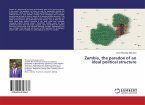The modernisation of economy and society in China began in the 1840s, with the opening of the country to the influence of global capitalism. The Xinhai Revolution overthrew the Qing monarchy and established a republic in 1911¿1912. Real power initially passed into the hands of various warlord cliques. The Kuomintang more or less succeeded in unifying the country by 1928. In the wake of the Sino-Japanese war of 1937¿1945, a civil war broke out in 1946. As an outcome, the People¿s Republic of China emerged in 1949, and the Communist Party definitively unified the continental part of the country. Since 1978, China following a course of reforms has turned into a dynamically developing socialist country with an open economy. Its enormous internal market offers attractive investment opportunities for foreign capital. The author relying on relevant theoretical considerations investigates the main processes and regularities of political and economic development of China in the modern age, including the Sino-American economic competition.
Hinweis: Dieser Artikel kann nur an eine deutsche Lieferadresse ausgeliefert werden.
Hinweis: Dieser Artikel kann nur an eine deutsche Lieferadresse ausgeliefert werden.








